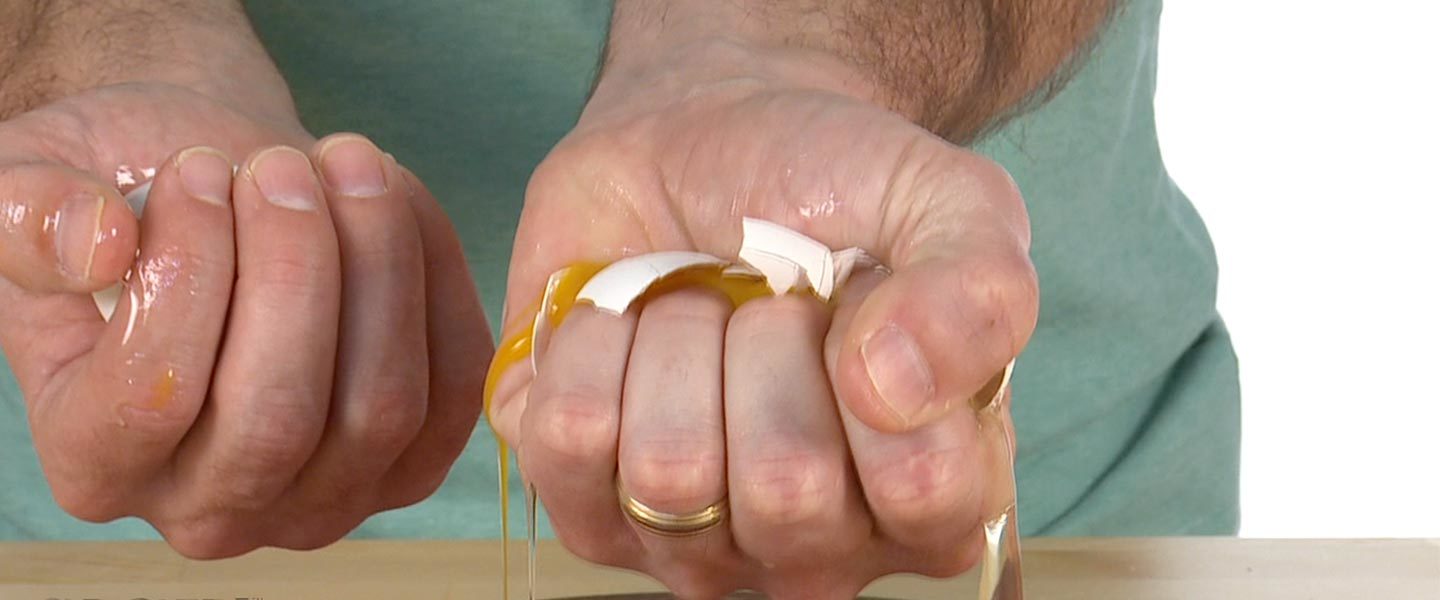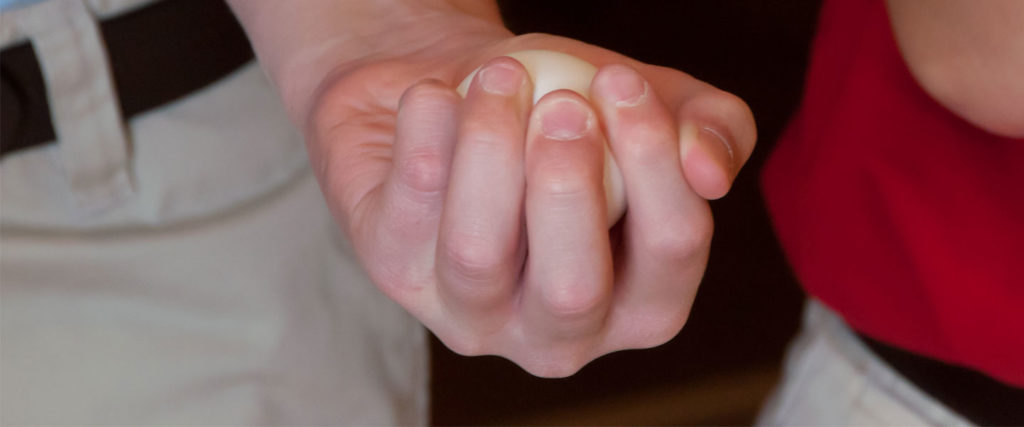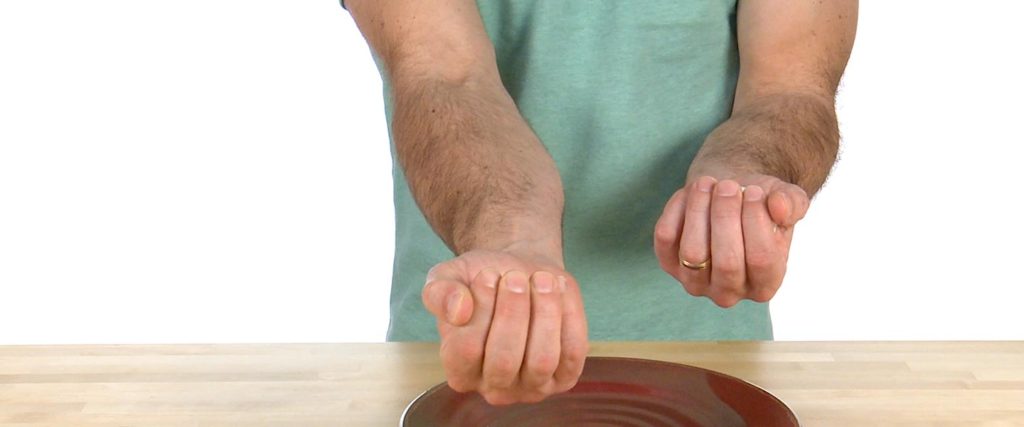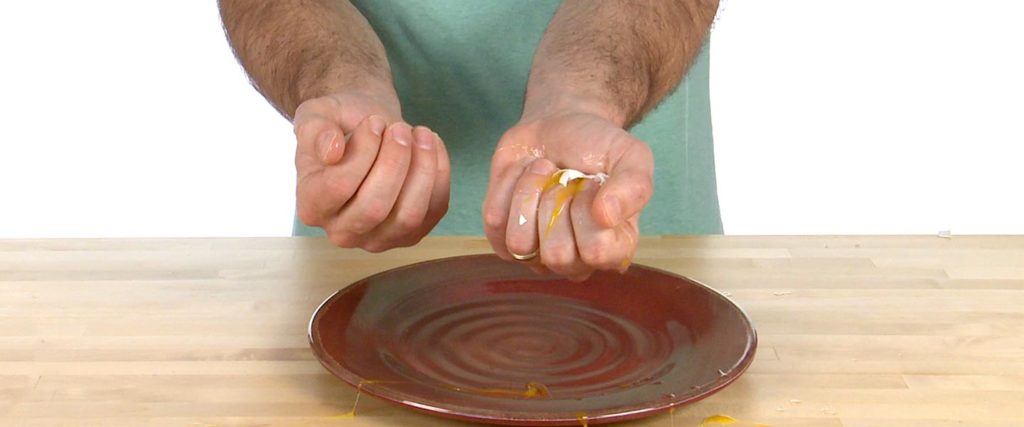Egg Drop Inertia Challenge
The egg drop is one of my all-time favorite science demonstrations. It’s a combination of strategy, skill, and just a little luck. The goal is […]

Eggs are amazingly strong despite their reputation for being so fragile. An egg can withstand nearly your entire strength as you try to squeeze it. There’s not even a crack! Do you know how it works? Check out the Impossible Egg Crush experiment, and we’ll let you in on the uncrushable egg secret.

Place an egg in the palm of your hand.

Close your hand so that your fingers are completely wrapped around the egg.
Holding the egg over a sink or bowl, squeeze the egg by applying even pressure all around the shell. To everyone’s amazement (mostly your own) the egg will not break.



Now hold the egg between your thumb and forefinger and squeeze the top and bottom of the egg. Are you covered in egg yolk? Why not?
Hold the egg in the palm of your hand, again. Over the sink, press only on one side of the shell. Do not squeeze the egg – just press on the side. Uh oh!


Now, try it with a ring on one of the fingers of your squeezing hand. Try to squeeze evenly around the entirety of the egg. What happens this time?
The egg’s unique shape gives it tremendous strength, despite its fragility. Eggs are similar in shape to a 3-dimensional arch, one of the strongest architectural forms. The egg is strongest at the top and the bottom (or at the highest point of the arch). That’s why the egg doesn’t break when you add pressure to both ends.
The curved form of the shell also distributes pressure evenly all over the shell rather than concentrating it at any one point. By completely surrounding the egg with your hand, the pressure you apply by squeezing is distributed evenly all over the egg. However, eggs do not stand up well to uneven forces which is why they crack easily when you push on just one side or wear a ring (or why it cracks on the side of a bowl). The uneven pressure of the ring against the shell will result in an amusing display of flying egg yolk for your audience members. This also explains how a hen can sit on an egg and not break it, but a tiny little chick can break through the eggshell – the weight of the hen is evenly distributed over the egg, while the pecking of the chick is an uneven force directed at just one spot on the egg.